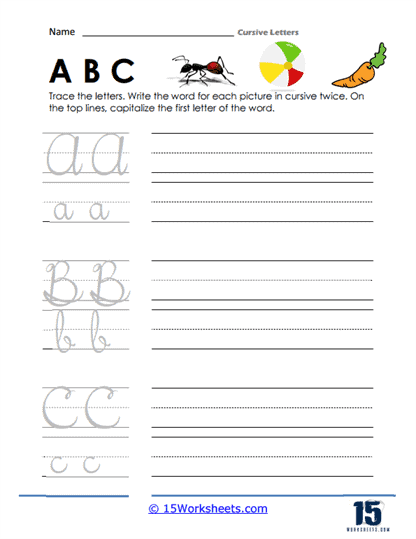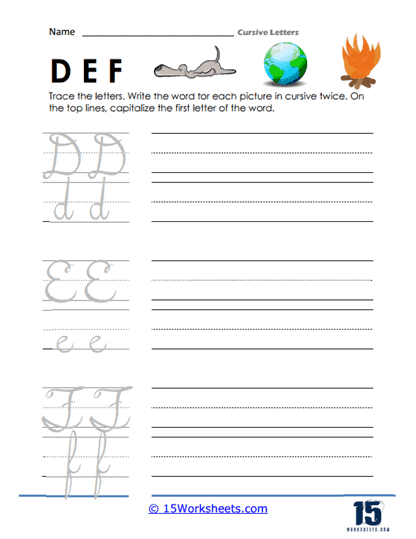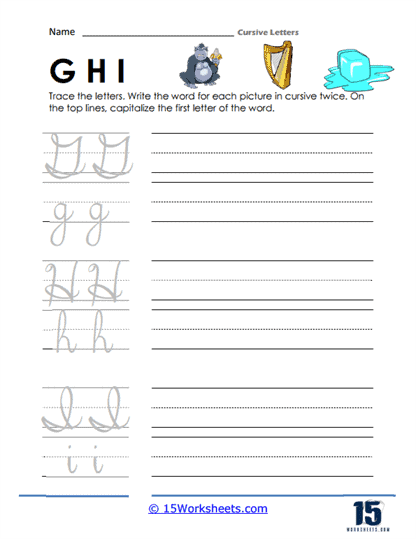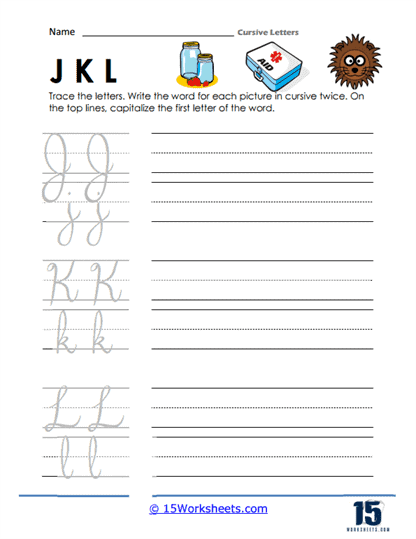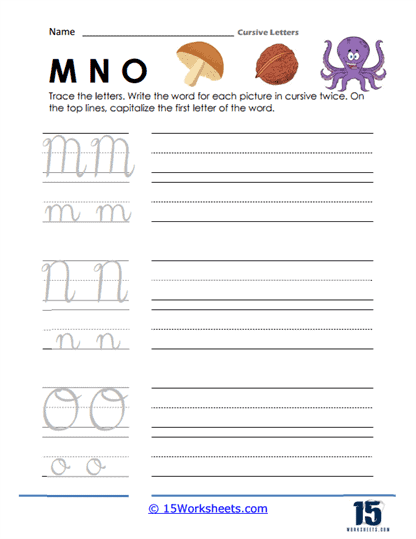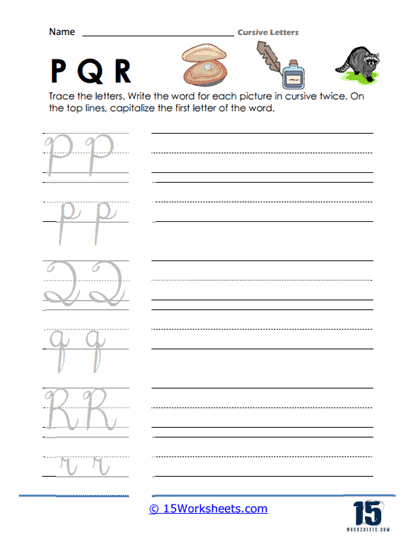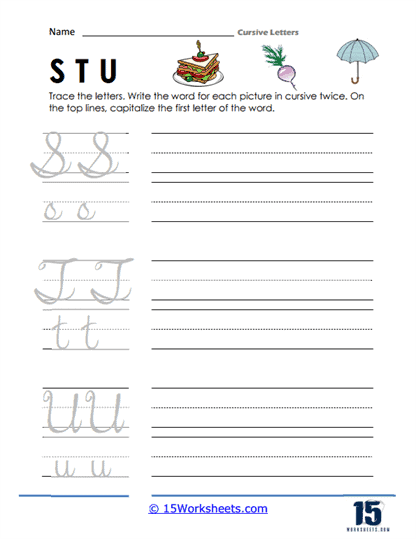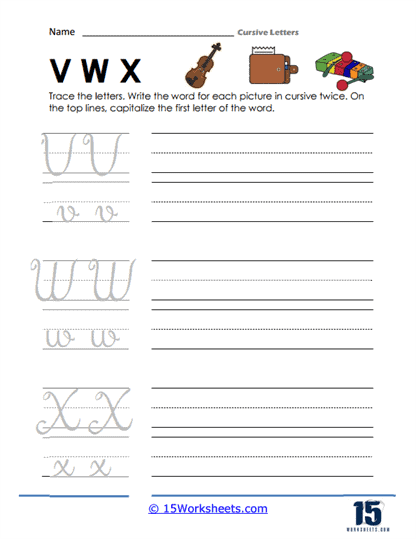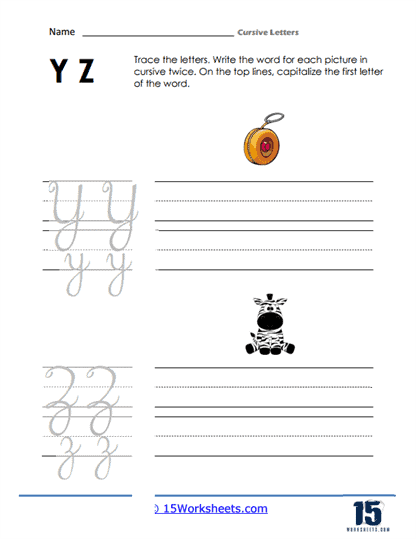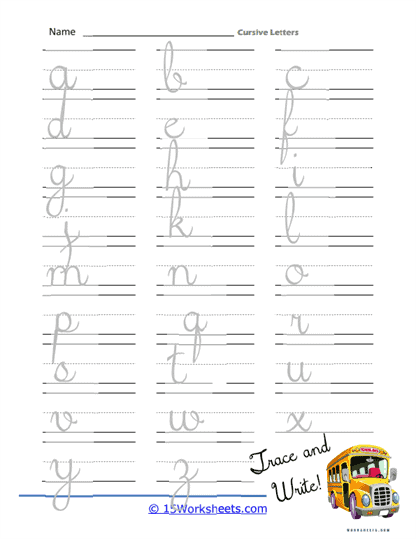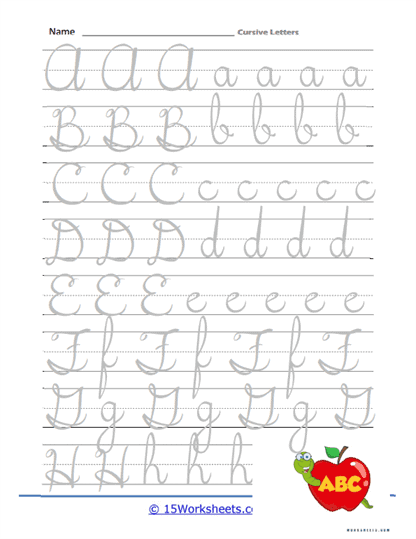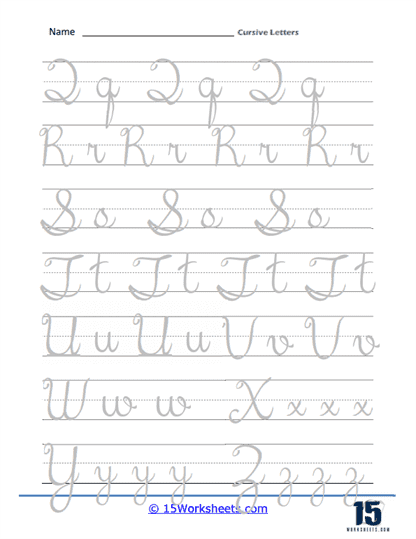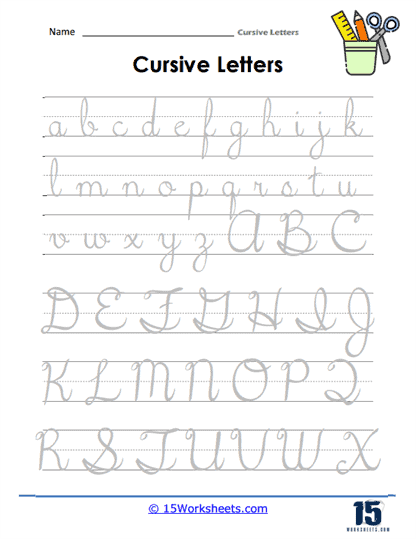Cursive Letters Worksheets
All About These 15 Worksheets
Understanding this collection of 15 Cursive Letters worksheets requires a deep dive into both the contents of these educational tools and the importance of cursive writing in a student’s educational journey.
Each worksheet in this series focuses on a specific subset of the alphabet, meticulously designed to guide students through the intricacies of cursive writing. The worksheets begin with the letters A through G, then progress sequentially through the alphabet, culminating with the letters X, Y, and Z. Every sheet displays the designated letters in both uppercase and lowercase forms, offering students a holistic view of cursive script.
The upper half of each worksheet showcases the cursive letters in their individual glory. These are printed with a solid line that clearly depicts the letter’s form. The lower half of the page presents the same letters but in a dotted line format, inviting students to trace over them. This progression from observation to action encourages a step-by-step approach to learning, allowing students to first acquaint themselves with the letter’s shape before attempting to recreate it.
These worksheets come equipped with visual aids, such as directional arrows, to instruct the proper stroke order and letter formation. For example, the worksheet containing the letters P, Q, R also includes images associated with these letters – a pie for P, a queen for Q, and a raccoon for R. These pictorial cues are not merely decorative; they serve as mnemonic devices, assisting students in linking the cursive letter to a corresponding image, thereby reinforcing memory retention.
As students progress through the collection, they gradually build a comprehensive skill set in cursive writing. From the simple curves of the letter ‘a’ to the more complex swirls of ‘z,’ the worksheets are meticulously crafted to ensure a smooth transition from one letter to the next, reinforcing the learning curve with each stroke.
Benefits Of Learning Cursive Writing To Students
The benefits of this cursive writing practice are manifold. Cursive writing, often regarded as an art form of the bygone era, carries significant educational value. It is more than a mere exercise in penmanship; it is a gateway to improved literacy. As students practice cursive writing, they engage multiple cognitive processes, including fine motor skills and visual and tactile processing. This engagement is essential for the development of brain pathways associated with language and communication.
Moreover, cursive writing fosters a sense of discipline and focus. The attention to detail required to form each letter correctly necessitates a high level of concentration, thereby training students in the art of mindfulness and patience. This attention to detail often translates to other academic areas, as students who practice cursive writing regularly may also exhibit improved performance in tasks that require careful consideration and precision.
Cursive writing also enhances reading comprehension. As students learn to write in a connected style, they become more adept at recognizing word patterns, which can expedite their reading fluency and comprehension. This skill is invaluable, as it lays the foundation for efficient learning across all subjects.
Additionally, cursive writing promotes the development of a personal style and aesthetic, allowing students to express their individuality. In a world increasingly dominated by digital communication, the personal touch of a handwritten note is both rare and special. Cursive writing, therefore, can also be a means of personal expression, affording students the opportunity to distinguish themselves with a unique handwriting style.
It is also important to note the historical significance of cursive writing. Many historical documents were written in cursive, and the ability to read and write in this style connects students to the past in a tangible way, allowing them to access primary source materials directly.
The practice of cursive writing, facilitated by this collection of worksheets, thus has numerous advantages. It strengthens cognitive development, fine motor skills, and literacy; it instills discipline and enhances reading comprehension; and it fosters personal expression and historical awareness.
In conclusion, this collection of 15 Cursive Letters worksheets provides an all-encompassing platform for students to master cursive writing. With its structured approach, visual prompts, and step-by-step progression, it is an invaluable tool in the educational repertoire. As students trace, write, and internalize each cursive letter, they are not only learning a method of communication but also developing skills that will serve them well throughout their academic and personal lives.

